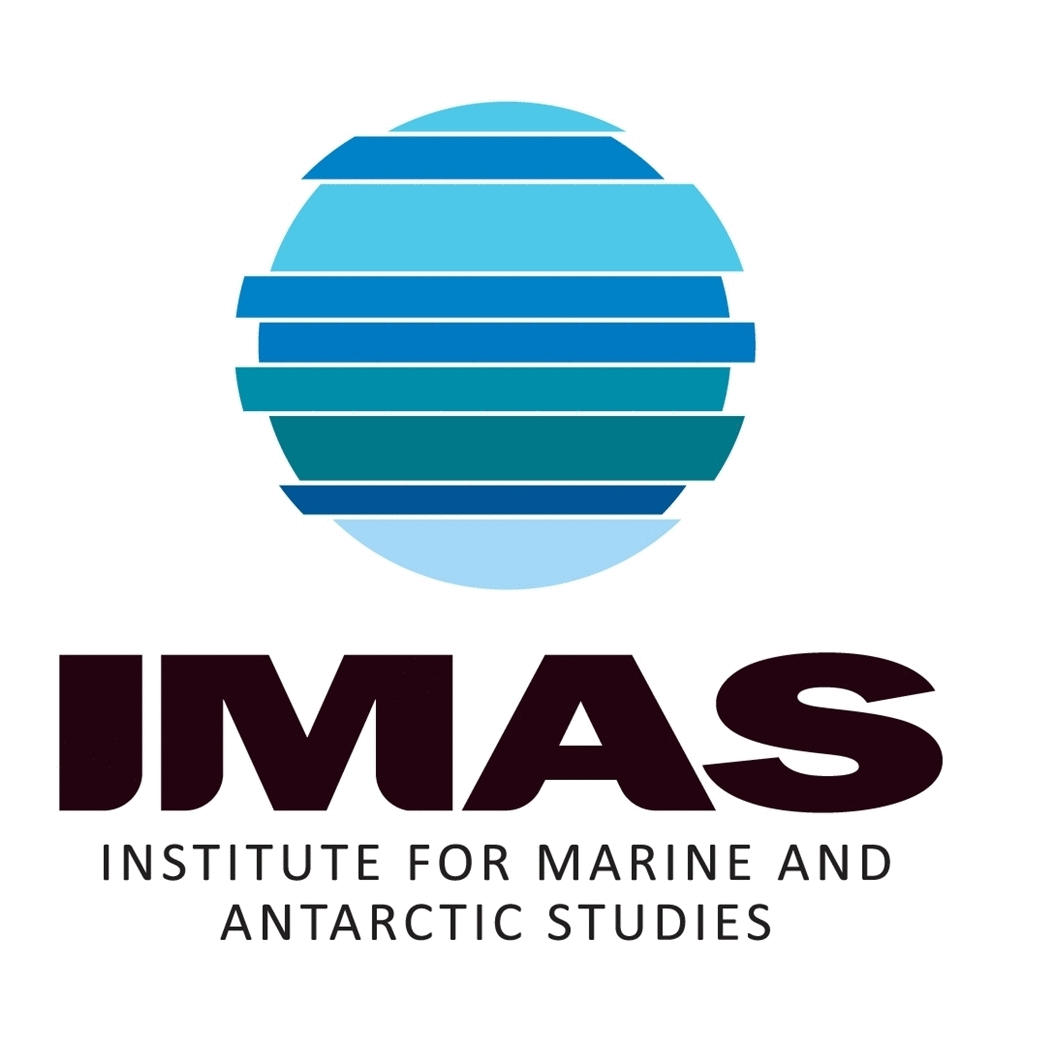Growth models, age frequency and size frequency distributions of sea urchin populations (Heliocidaris erythrogramma) in native macroalgal beds and sea urchin barrens
Growth models were constructed for two sea urchin populations over a two-year period using a tag-recapture study in the Mercury Passage, Tasmania. Sea urchins were tagged using tetracycline and calcein and growth models constructed using measurements taken from sea urchin jaws.
Simple
Identification info
- Date (Creation)
- 2008-08-12T15:20:00
Principal investigator
Tasmanian Aquaculture and Fisheries Institute (TAFI) - Pederson, Hugh, Dr (PhD student)
Private Bag 49
University of Tasmania
Hobart
TAS
7001
Australia
Point of contact
School of Zoology, University of Tasmania (UTAS) - Johnson, Craig, Prof. (PhD supervisor)
Private Bag 5
University of Tasmania
Hobart
Tasmania
7001
Australia
- Purpose
- Quantify the effect of habitat type and quality on sea urchin growth and examine the age frequency distributions of sea urchin populations for evidence of mass recruitment events.
- Credit
- Australian Research Council (ARC)
- Status
- Completed
Principal investigator
Point of contact
Institute for Marine and Antarctic Studies (IMAS), University of Tasmania (UTAS) - Johnson, Craig, Prof.
IMAS - Sandy Bay
Private bag 129
Hobart
Tasmania
7001
Australia
- Topic category
-
- Biota
Extent
N
S
E
W
))
Temporal extent
- Time period
- 1999-01-01T00:00:00 2001-02-28T00:00:00
Vertical element
- Minimum value
- 0
- Maximum value
- 5
- Identifier
- EPSG::5715
- Name
- MSL depth
- Maintenance and update frequency
- Not planned
Resource format
- Title
- Excel
- Date
- Edition
- -
- Global Change Master Directory Earth Science Keywords v.5.3.8
-
- Oceans | Marine Biology | Marine Invertebrates
- CAAB - Codes for Australian Aquatic Biota v2.
-
- 25 247001
- Heliocidaris erythrogramma
- Keywords (Theme)
-
- Growth
- Australian and New Zealand Standard Research Classification (ANZSRC): Fields of Research
- Keywords (Theme)
-
- Jaw length
- Test diameter
Resource constraints
- Classification
- Restricted
Resource constraints
- Use limitation
- The data described in this record are the intellectual property of H. Pederson.
Resource constraints
- Linkage
-
http://i.creativecommons.org/l/by/2.5/au/88x31.png
License Graphic
- Title
- Creative Commons Attribution 2.5 Australia License
- Website
-
http://creativecommons.org/licenses/by/2.5/au/
License Text
- Other constraints
- The citation in a list of references is: citation author name/s (year metadata published), metadata title. Citation author organisation/s. File identifier and Data accessed at (add http link).
- Other constraints
- Please contact H. Pederson for access to data.
Associated resource
- Title
- Population dynamics of the sea urchin Heliocidaris erythrogramma
- Date (Creation)
- 2011-09-21T00:00:00
- Language
- English
- Character encoding
- UTF8
- Supplemental Information
- Pederson, H.G. (2003). Population dynamics of the sea urchin Heliocidaris erythrogramma on the east coast of Tasmania (PhD thesis, University of Tasmania). Pederson, HG and Johnson, CR, Growth and age structure of sea urchins (Heliocidaris erythrogramma) in complex barrens and native macroalgal beds in eastern Tasmania, ICES Journal of Marine Science: (International Council for The Exploration of The Sea), 65, (1) pp. 1-11. ISSN 1054-3139 (2008)
Content Information
- Content type
- Physical measurement
- Name
- Jaw length
- Name
- mm
- Name
- Test diameter
- Name
- mm
Distribution Information
- Distribution format
-
- Excel
Distributor
Principal investigator
Resource lineage
- Statement
- Approximately 400 sea urchins were tagged at each of the two sites by divers removing all sea urchins from an experimental plot located on the 5-m contour. The experimental plot measured ~ 10 m x 6 m at Lords Bluff and 10 m x 12 m at Four Mile Point. Experimental plots were sampled three times between February 1999 and February 2001 (12, 14, and 24 months post-tagging). Approximately one-quarter of the number of sea urchins originally tagged were recaptured after 12 and 14 months of growth, with approximately half the original number of tagged sea urchins left in the plots to complete 24 months of growth posttagging. The recaptured sea urchins were selected to represent the range of sizes present, and were frozen before dissection in the laboratory. On the final sampling in early February 2001, all remaining sea urchins were removed from the plots and from within a 1-m band around the plots. Further methods can be found in the published paper.
- Hierarchy level
- Dataset
Metadata
- Metadata identifier
- 79fdf410-68d2-11dd-a210-00188b4c0af8
- Language
- English
- Character encoding
- UTF8
Point of contact
Type of resource
- Resource scope
- Dataset
- Metadata linkage
-
https://metadata.imas.utas.edu.au/geonetwork/srv/eng/catalog.search#/metadata/79fdf410-68d2-11dd-a210-00188b4c0af8
Point of truth URL of this metadata record
- Date info (Creation)
- 2015-07-21T16:26:10
- Date info (Revision)
- 2015-07-21T16:26:10
Metadata standard
- Title
- ISO 19115-3:2018
Overviews
Spatial extent
N
S
E
W
))
Provided by

Associated resources
Not available
 IMAS Metadata Catalogue
IMAS Metadata Catalogue